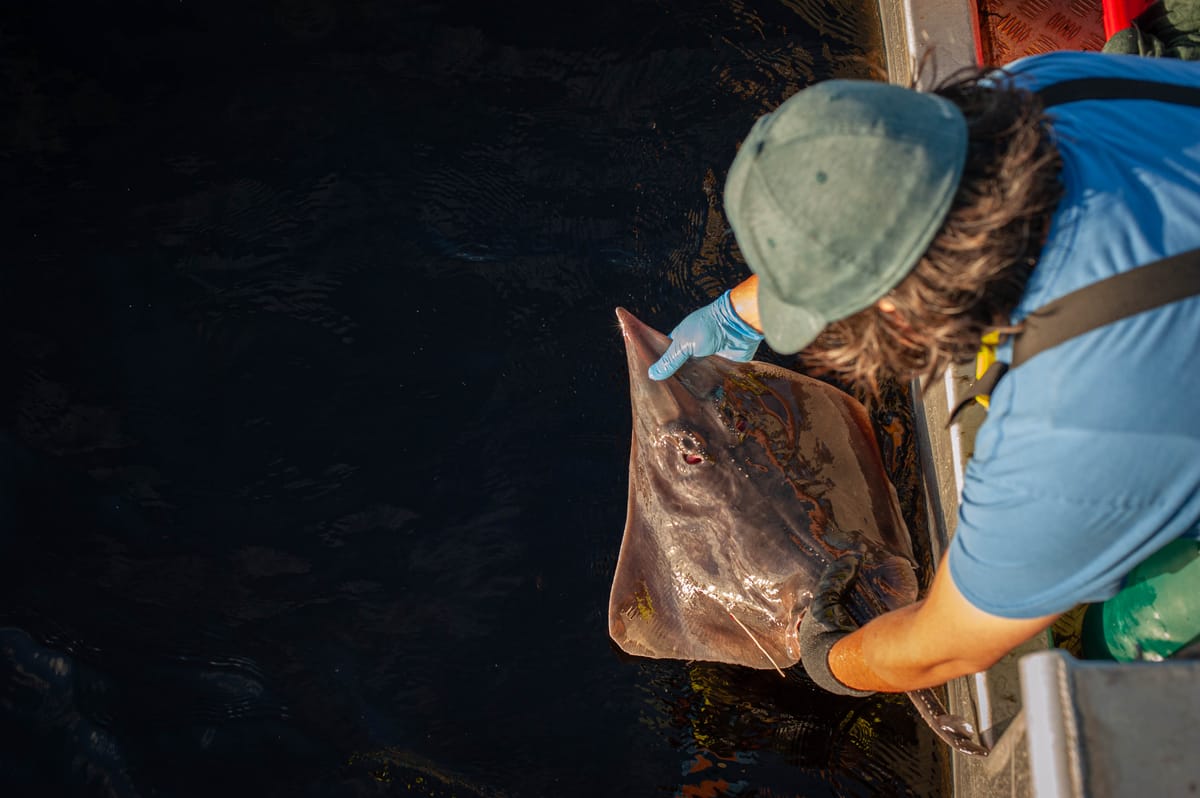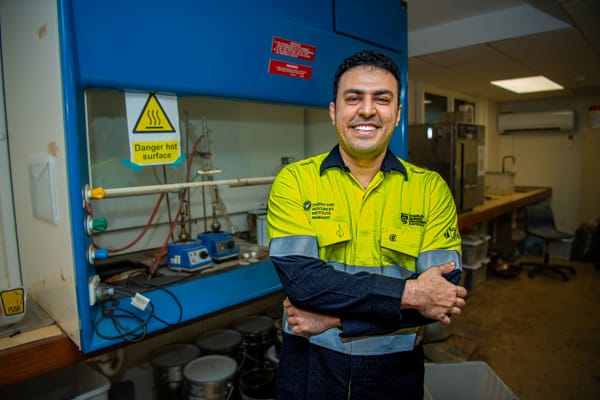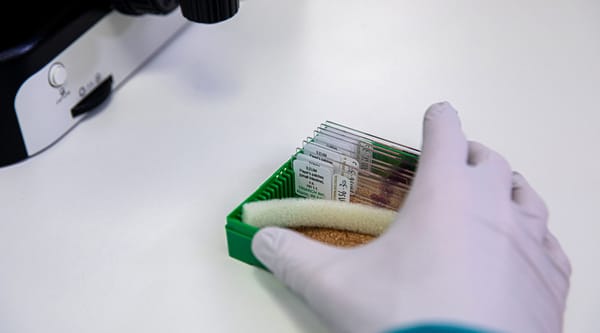New arrival: baby Maugean skate hatches from captive-laid egg in world first for the endangered species
The program was established for this ancient and endangered species in response to significant declines in the Maugean skate population in Macquarie Harbour, Tasmania – their last known habitat.

First published by University of Tasmania
For the first time ever, a baby Maugean skate has hatched from an egg laid in captivity – and scientists are looking forward to more arrivals soon.
It’s an exciting time for marine ecologists at the University of Tasmania’s Institute for Marine and Antarctic Studies (IMAS), who have been working around the clock since an adult female skate was brought into captivity in December last year, and laid her first egg shortly after.

The program was established for this ancient and endangered species in response to significant declines in the Maugean skate population in Macquarie Harbour, Tasmania – their last known habitat.
“We’ve been trialling captive holding and rearing methods for two years with other skate species, so successfully producing our first hatchling from a captive-laid egg for this very unique skate is really something to celebrate – and it’s a significant step towards conserving the species,” said IMAS researcher, Professor Jayson Semmens, who leads the IMAS Maugean skate captive breeding program.
“The eggs take around seven months to develop, with the first healthy female skate hatchling arriving on the 10th of July.
The adult female has been laying eggs since her arrival last December – two at a time, every four days on average – and has produced over 100 eggs to date. So we’re preparing for more hatchlings to make their appearance any time now,” Professor Semmens said.

Hatching plans to conserve a species
The IMAS team also brought 50 wild-laid eggs into captivity in December, with over half of those viable and producing healthy hatchlings, but captive egg laying is another way to rapidly increase the numbers of animals in captivity. This successful result brings researchers one step closer to using captive techniques to bolster the wild population.
“Since December, the program has evolved quickly from simply knowing if we can safely hold skate and their eggs, to confirming that not only can this be done, but captive females can rapidly contribute to the number of eggs in captivity – and the embryos can develop into viable hatchlings,” said IMAS researcher, Dr David Moreno.

“We also have a captive male, but interestingly it is not the father of the new hatchling. Instead, the female is fertilising her eggs with sperm she’s stored from previously mating in Macquarie Harbour, so this sperm could come from several males.
“We know this is the case, because we were keen not to disturb the female while she was laying, so we kept the captive male in a separate tank until about two weeks ago,” Dr Moreno said.
“But with so many eggs being laid by this one female, we’ve now put the two animals together and we’re happy to see it hasn’t stopped the female from laying eggs. Now we’re witnessing some courtship behaviour, so we’re hoping the male and female will mate soon.”
Captive breeding and beyond…
In earlier captive breeding trials, scientists used artificial insemination on other skate species, which is another way fertilisation could be achieved for this species. However, the success of both the wild and now captive-laid eggs developing into hatchlings means the program is not solely reliant on captive breeding.
“The next stage is to understand the genetic identity of the Maugean skates we have in captivity and examine how this compares with genetic diversity in the wild population,” Professor Semmens said. “This will help us determine which animals to retain as founders for a captive population, and which animals could eventually be released.
“Genetic sequencing information is crucial for managing a captive population and to achieve our ultimate goal – ensuring the continued existence of the species.”
IMAS Fisheries & Aquaculture Centre Head, Professor Sean Tracey, said hatching the first baby skates from a captive-laid egg is an exciting outcome for the Institute.
“The success rate is beyond expectations, both in hatching and growth. And we have a low mortality rate of less than 8% which is also a positive outcome, as we didn’t know how the skate would respond to being held in our experimental animal holding facilities,” Professor Tracey said.
“The arrival of this hatchling is also well-timed, with our multi-million-dollar expansion of the IMAS Taroona site recently commencing. Not only will we see our captive bred animals grow as our facilities grow, but the new labs will allow us to conduct state of the art research to enhance our captive breeding program,” he said.
“Renovations to the existing captive skate breeding space at Taroona are being accelerated so animals in captivity can be held across multiple independent recirculating systems. This will ensure the juveniles can continue to grow safely, and enhance our animal husbandry methods for the species – a win for endangered marine species conservation, led by Tasmanian scientists.”
The IMAS captive breeding program is supported by funding from the Australian Government’s Saving Native Species and Natural Heritage Trust Programs, through the Cradle Coast Authority, and funding from the Tasmanian Government’s Department of Natural Resources and Environment Tasmania (NRE Tas). Renovations to the existing IMAS captive breeding facilities are directly funded by NRE Tas.
Banner image: Baby Maugean skate
hatchling. Credit: Jayson Semmens




